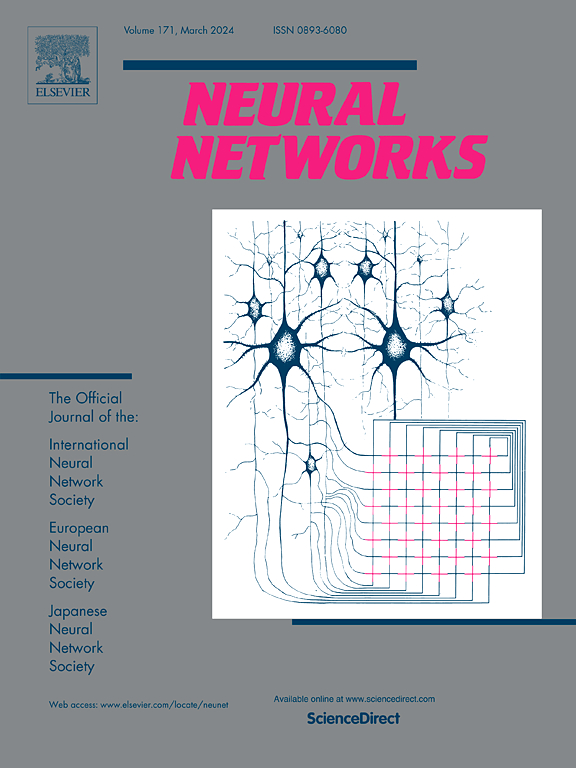Static pinning synchronization control of self-triggered coupling dynamical networks
IF 6
1区 计算机科学
Q1 COMPUTER SCIENCE, ARTIFICIAL INTELLIGENCE
引用次数: 0
Abstract
In this paper, a new static pinning intermittent control based on resource awareness triggering is proposed. A multi-layer control technique is used to synchronize the coupled neural network. First, a hierarchical network structure including pinned and interaction layers is induced using each pinning strategy. Second, using the ideas of average aperiodic intermittent control (AIC) rate method and constructing an auxiliary function, a new lemma is proposed for the pinning intermittent synchronization of coupled networks, where the upper/lower bound restrictions on each control width for AIC are relaxed. Third, to obtain the desired synchronization behavior, a self-triggering mechanism (STM) is proposed to execute the AIC of the pinned and interaction layers. Moreover, the proposed STM is effective for the actuation of the static pinning impulsive control. The static pinning method modifies the single pinning and switching pinning impulsive control. Finally, the proposed results are applied to Chua’s circuits, oscillators and small-world networks. Experimental results show the performance of the proposed STM which reduces 34.58% the number of control updates compared to a periodically intermittent event-triggered scheme. Further, for large-scale coupled networks, the -dimensional Laplacian matrix can be decomposed into and dimensions by hierarchical method, thus reducing the complexity of calculation.
自触发耦合动力学网络的静态销钉同步控制
本文提出了一种基于资源感知触发的新型静态引脚间歇控制。采用多层控制技术来同步耦合神经网络。首先,利用每种引脚策略诱导出包括引脚层和交互层的分层网络结构。其次,利用平均非周期性间歇控制(AIC)率方法的思想并构造一个辅助函数,为耦合网络的针刺间歇同步提出了一个新的两式,其中放宽了对 AIC 的每个控制宽度的上/下限限制。第三,为了获得理想的同步行为,提出了一种自触发机制(STM),用于执行引脚层和交互层的 AIC。此外,所提出的 STM 还能有效地执行静态插针脉冲控制。静态引脚方法修改了单一引脚和切换引脚脉冲控制。最后,将提出的结果应用于 Chua 电路、振荡器和小世界网络。实验结果表明,与周期性间歇事件触发方案相比,所提出的 STM 方案减少了 34.58% 的控制更新次数。此外,对于大规模耦合网络,N 维拉普拉斯矩阵 LV 可通过分层方法分解为 sp×sp 和 N-sp×N-sp 维,从而降低了计算复杂度。
本文章由计算机程序翻译,如有差异,请以英文原文为准。
求助全文
约1分钟内获得全文
求助全文
来源期刊

Neural Networks
工程技术-计算机:人工智能
CiteScore
13.90
自引率
7.70%
发文量
425
审稿时长
67 days
期刊介绍:
Neural Networks is a platform that aims to foster an international community of scholars and practitioners interested in neural networks, deep learning, and other approaches to artificial intelligence and machine learning. Our journal invites submissions covering various aspects of neural networks research, from computational neuroscience and cognitive modeling to mathematical analyses and engineering applications. By providing a forum for interdisciplinary discussions between biology and technology, we aim to encourage the development of biologically-inspired artificial intelligence.
 求助内容:
求助内容: 应助结果提醒方式:
应助结果提醒方式:


